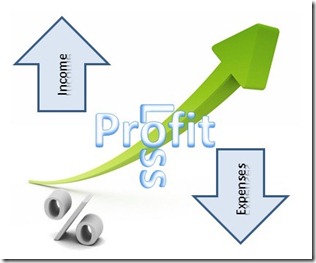In our last blog post, we outlined the reasons that every small business needs to have a budget. A budget is a planning document; a chart that lets you map your success and make adjustments along the way. Now the  question is, where do you begin?
question is, where do you begin?
An annual budget is the description of your financial plan with estimates of revenues and expenditures. The idea is to use past information to project into the future. You can modify your operating budget as things change during the course of the year, and you should revisit your budget monthly at a minimum.
The first step is to gather your P&L information and organize it. Organize your income and expenses in a format that makes sense for your business. Use Quickbooks or similar accounting software. Be sure to include all your operating expenses, such as:
- – Rent
- – Insurance
- – Personnel, including payroll taxes
- – Costs of purchasing or producing your product
- – Sales and marketing
- – Phone, Internet, and utilities
- = Repairs and maintenance
- – Outside services (accounting, legal etc.)
- – Fees and licenses
- – Interest
- – Depreciation
- – Office supplies
- – Company vehicles, travel
Once you have assembled the figures, you can start thinking about the meaning behind each line item. Can you increase your profits? Is that line item for an expense adjustable? You can then take your P&L report and think about how the numbers will affect the future performance of your company. Start by reviewing the numbers that show your actuals (from your P&L report), your forecast (based on where you think you can make adjustments), and the difference or variance for each line item. Now you have a working budget! The idea is to familiarize yourself with your operational numbers so you can create a plan for profitability, not just a history of where you have been. Use an accounting package that can do these things efficiently or use a spreadsheet if you are simply not ready for that.
If you are still unsure of how to proceed, try the following step-by-step approach. Start with the annual P&L statement from the previous year. Gather all the financial information at hand about your company’s operations. Then review each line item and enter it in a spreadsheet or in columns to show past performance. In the next column, enter assumptions about the next year, including where you will realize additional costs as well as profits. If you can’t read your P&L, then it is too complicated. Work with your CFO to simplify it so it makes sense. It shouldn’t be a mystery.
To help with your planning with your operational budget, ask yourself the following questions:
- – How much do you expect to grow and how will that impact monthly income?
- – How much profit do you need to pay yourself or to cover other larger investments?
- – Will you hire new staff and how will it impact your payroll?
- – Do you anticipate larger marketing and sales expenses?
- – Do you anticipate larger professional fees such as legal fees, consulting, etc?
- – Will your rent and overhead expenses stay the same or increase?
- – Do you anticipate more business travel?
- – What tax payments are expected with the profits?
- – What other major expenses do you anticipate with the growth of your business?
Once you have asked these critical questions, you can adjust the figures from the previous year using your assumptions. To budget for success, be sure to consider critical issues in your operational budget, such as whether you have enough profit to pay yourself, what systems you have in place to assure growth, whether you have sufficient staffing and physical space to accommodate growth, and if you need additional staff have you included additional payroll, taxes, and overhead in your planning? Remember to cover balance sheet outflows such as loan payments and owner’s draws.
In addition to budgeting for your overall operations, you also need to manage your cash flow. The criteria for a cash flow budget are different from an operational budget, and that will be the topic of our next blog post.

